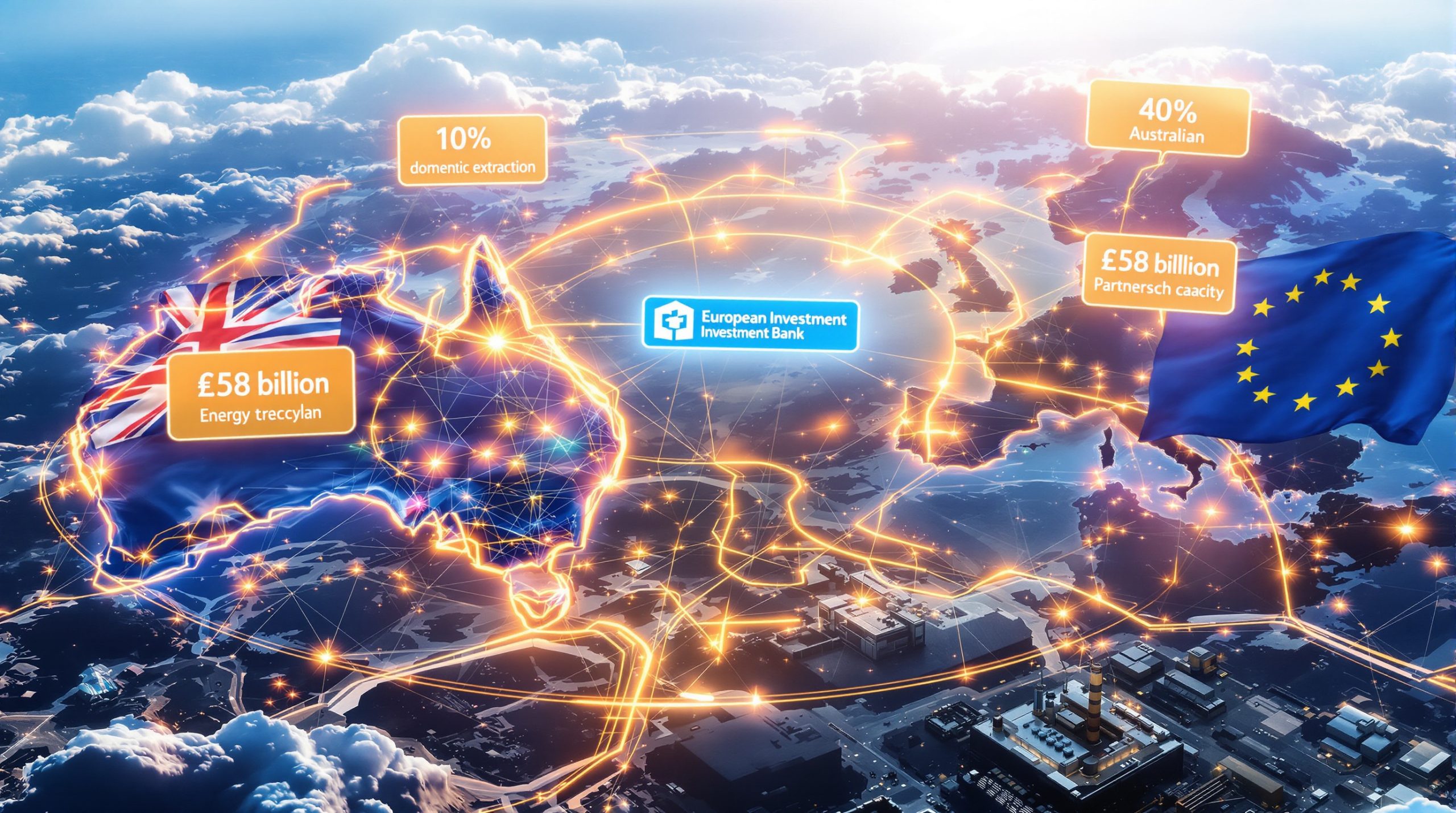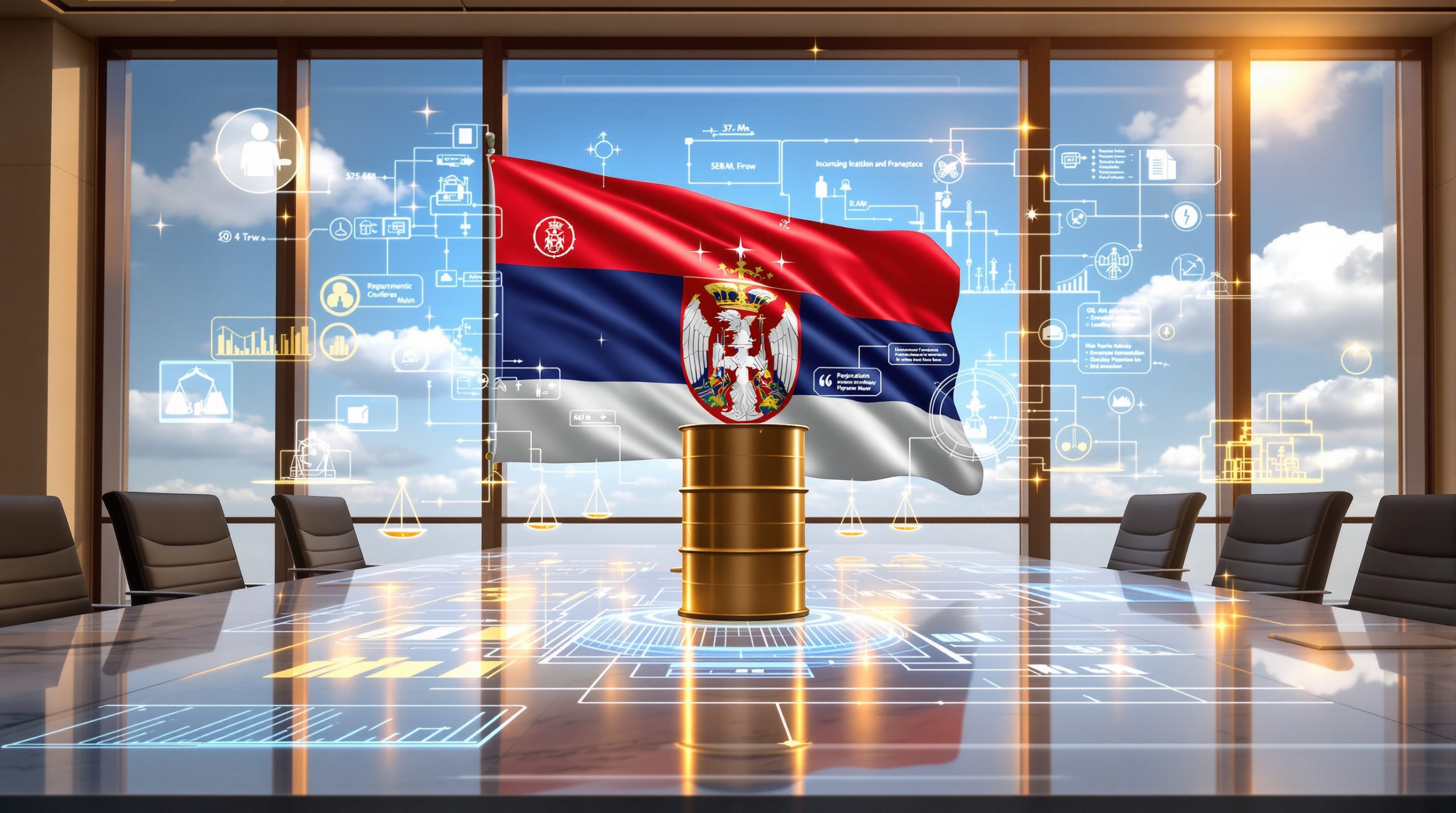Australia's Mining Technology Leadership Revolution Through Strategic Industry Collaboration
The global resources sector stands at a critical juncture where technological advancement, geopolitical tensions, and energy transition demands converge to reshape competitive dynamics. Australia's mining industry faces unprecedented challenges that require coordinated responses across operational companies and supporting service providers. Rather than approaching these challenges in isolation, the sector is embracing comprehensive collaboration models that integrate mining operations with equipment, technology, and services providers to maintain global leadership positions.
This strategic approach recognises that mining competitiveness increasingly depends on ecosystem-wide innovation rather than individual company initiatives. The convergence of automation technologies, digital transformation requirements, and supply chain resilience imperatives demands cross-sector coordination that extends beyond traditional operational boundaries. As international competition intensifies and technological capabilities evolve rapidly, Australia's mining sector is positioning itself through unified industry leadership that demonstrates collective capability on the global stage. The Global Resources Innovation Expo 2026 exemplifies this coordinated approach to industry advancement.
Strategic Positioning Through Cross-Sector Integration
Collaborative Framework Development
The mining sector's strategic evolution centres on unprecedented collaboration between operational companies and mining equipment, technology, and services providers. This partnership model, exemplified by the strategic alliance between Austmine and AusIMM for the Global Resources Innovation Expo 2026, represents a fundamental shift toward integrated industry leadership. The collaboration brings together two distinct but complementary sectors: mining operators focused on resource extraction and METS companies providing technological solutions and operational support.
Key Partnership Elements:
• Cross-sector knowledge transfer mechanisms
• Integrated technology development pathways
• Unified international market positioning
• Shared innovation investment frameworks
• Collaborative workforce development programs
This dual-sector approach enables comprehensive value chain integration, ensuring that technological innovations align with operational requirements while addressing real-world implementation challenges. The framework facilitates direct communication between technology developers and end users, accelerating the commercial deployment of proven solutions.
International Positioning Strategy
Australia's resources sector is implementing a coordinated international positioning strategy that leverages both operational excellence and technological innovation capabilities. According to Stephen Durkin, Chief Executive Officer of AusIMM, the unification of Australian mining and METS industries represents a critical response to current market dynamics, emphasising the sector's essential role in global energy transition and national prosperity.
The strategic positioning encompasses several key components:
Geographic Advantage Utilisation:
• Perth's proximity to Asia-Pacific mining regions
• Established mining services infrastructure capacity
• International delegation accommodation capabilities
• Regional expertise concentration in Western Australia
Historical Precedent Leverage:
The selection of Perth as the 2026 venue, following Brisbane's inaugural event in May 2025, demonstrates strategic geographic rotation within Australia. This approach maximises exposure to different regional strengths whilst maintaining domestic industry cohesion, particularly as the sector undergoes significant mining industry evolution.
Value Chain Integration Analysis
The comprehensive integration approach addresses the entire mining value chain, from exploration and extraction through processing and export logistics. This holistic perspective recognises that competitive advantage increasingly depends on system-wide optimisation rather than isolated improvements in individual operational areas.
| Integration Areas | Mining Operations | METS Providers | Collaborative Benefits |
|---|---|---|---|
| Technology Development | Operational requirements definition | Innovation and engineering | Accelerated commercialisation |
| Workforce Development | Industry-specific training | Technical expertise transfer | Enhanced skill capabilities |
| International Marketing | Operational case studies | Technology demonstrations | Comprehensive capability showcase |
| Investment Attraction | Project development needs | Technology scalability | Integrated value propositions |
Critical Technology Evolution Shaping Mining Competitiveness
Commercial-Scale Automation Deployment
The mining sector's technology focus has shifted from pilot projects to commercial-scale automation deployment across operational environments. The Global Resources Innovation Expo 2026 programme explicitly emphasises automation as a primary competitive differentiator, reflecting industry consensus that operational automation represents essential capability for maintaining international competitiveness. Moreover, AI transforming mining operations is becoming increasingly evident across various operational workflows.
Automation Technology Categories:
• Autonomous Equipment Systems: Commercial deployment of autonomous haul trucks, drilling equipment, and material handling systems
• Remote Operation Centres: Centralised control systems enabling operation of multiple mine sites from integrated command centres
• Predictive Maintenance Networks: Sensor-based monitoring systems providing real-time asset health assessment and maintenance scheduling
• Production Optimisation Platforms: AI-driven systems for resource extraction scheduling and equipment allocation optimisation
The emphasis on commercial-scale implementation indicates industry maturation beyond experimental phases toward proven, production-ready automation systems. This transition requires substantial capital investment but offers significant operational efficiency improvements and enhanced safety outcomes.
AI Integration Across Operational Workflows
Artificial intelligence integration extends beyond automation to encompass comprehensive operational workflow optimisation. Mining companies are implementing AI systems across multiple functional areas to enhance decision-making capabilities and operational efficiency. Furthermore, data-driven mining operations are transforming how companies approach resource extraction and management.
Primary AI Application Areas:
- Resource Optimisation: Machine learning algorithms for ore body modelling and extraction sequence optimisation
- Supply Chain Management: Predictive analytics for logistics coordination and inventory management
- Environmental Compliance: Automated monitoring systems for regulatory compliance and environmental impact assessment
- Safety Management: AI-powered risk assessment and incident prevention systems
The integration approach focuses on operational technology deployment that delivers measurable productivity improvements whilst maintaining system reliability and safety standards.
Digital Resilience Framework Implementation
Australia's mining operations frequently occur in remote locations with limited connectivity infrastructure, necessitating robust digital resilience frameworks. These systems address network reliability, data security, and operational continuity requirements specific to remote mining environments.
Digital Resilience Components:
Network Reliability: Redundant communication systems ensuring consistent connectivity between remote operations and central management systems
Data Security Protocols: Cybersecurity frameworks protecting operational technology systems from external threats and unauthorised access
System Redundancy: Backup systems and failover protocols maintaining operational continuity during technical failures or connectivity disruptions
Energy Transition Technology Integration
The Global Resources Innovation Expo 2026 theme "Competing Globally in the Critical Era" explicitly addresses energy transition as a core reshaping force for the mining sector. This positioning reflects industry recognition that mining operations must evolve to support renewable energy supply chains whilst reducing operational carbon footprints. Additionally, the development of energy transition technologies requires sophisticated mineral extraction and processing capabilities.
Energy Transition Technology Focus Areas:
• Renewable Energy Integration: Solar, wind, and battery storage systems providing clean power for mining operations
• Critical Minerals Processing: Advanced processing technologies for lithium, cobalt, rare earths, and other minerals essential to renewable energy infrastructure
• Decarbonisation Technologies: Equipment and processes reducing greenhouse gas emissions from mining operations
• Circular Economy Systems: Resource recovery and recycling technologies minimising waste and environmental impact
Rio Tinto's renewable diesel trial operations demonstrate practical pathways toward mining fleet decarbonisation, showing how established mining companies are implementing energy transition technologies at operational scale.
Geopolitical Pressures Driving Strategic Adaptation
Supply Chain Resilience Imperatives
The Global Resources Innovation Expo 2026 programme explicitly identifies supply chain resilience as a critical focus area, reflecting industry awareness of geopolitical vulnerabilities in traditional export-dependent business models. The emphasis on supply chain resilience indicates strategic recognition that single-market dependencies represent material business risks in the current international environment.
Supply Chain Resilience Strategies:
• Domestic Processing Capacity Development: Establishing value-added processing capabilities within Australia to reduce dependence on overseas processing facilities
• Partnership Diversification: Developing multiple customer relationships across different geographic regions and market segments
• Technology Transfer Arrangements: Strategic partnerships enabling technology sharing and capability development with international partners
• Strategic Stockpiling Protocols: Government and industry coordination on critical mineral reserves and supply chain buffering
International Partnership Evolution
Australia's strengthening cooperation with the European Union on critical minerals supply chains demonstrates real-time application of supply chain diversification strategy. This relationship development reflects broader industry recognition that geopolitical risk management requires active diversification of international partnerships beyond traditional trading relationships.
Partnership Development Framework:
- Multiple Geographic Relationships: Establishing customer relationships across North America, Europe, and Asia-Pacific regions
- Value-Added Processing Partnerships: Joint ventures and technology sharing arrangements for domestic processing capability development
- Research and Development Collaboration: International partnerships for mining technology advancement and innovation commercialisation
- Policy Coordination Mechanisms: Government-to-government cooperation frameworks supporting private sector partnership development
Investment Flow Analysis and Capital Allocation
The geopolitical context surrounding the Global Resources Innovation Expo 2026 reflects a period marked by energy transition acceleration, critical minerals demand surge, geopolitical uncertainty, and shifting financial markets. These conditions create both challenges and opportunities for investment attraction and capital allocation optimisation.
Investment Trend Considerations:
Foreign Direct Investment Patterns: International investor interest in Australian mining assets reflects both resource quality and political stability advantages
Government Policy Support: Australian government initiatives supporting mining and METS sector development through funding programmes and regulatory frameworks
Capital Expenditure Timing: Mining companies optimising technology investment timing to align with commodity price cycles and market conditions
Workforce Transformation and Skills Evolution
Technical Skills Gap Assessment
The Global Resources Innovation Expo 2026 programme positions workforce excellence as a central theme, reflecting industry recognition that technical skills gaps represent material constraints on technology adoption and operational competitiveness. The skills gap encompasses traditional mining competencies and emerging technology capabilities required for automation and digital system integration.
Critical Skills Requirements:
• Automation System Operation: Technical capabilities for autonomous equipment management and troubleshooting
• Data Science and Analytics: Statistical analysis and machine learning competencies for operational optimisation
• Digital Systems Integration: Information technology skills for connecting operational technology with enterprise systems
• Cybersecurity Management: Specialised knowledge for protecting industrial control systems from cyber threats
• Remote Operations Management: Capabilities for managing distributed operations through centralised control systems
Recent industry analysis highlights ongoing challenges in attracting engineering talent to mining roles, with research addressing recruitment difficulties across the sector. This talent attraction challenge reflects broader competition for technical skills across multiple industries experiencing digital transformation.
Professional Development Pathway Evolution
Traditional mining education and training programmes are expanding to incorporate digital technology competencies, requiring curriculum updates across vocational and professional education providers. The evolution encompasses both technical skill development and leadership capabilities for managing technology-enabled operations.
Education System Adaptations:
- Curriculum Integration: Mining engineering programmes incorporating automation, AI, and digital systems coursework
- Cross-Sector Learning: Knowledge transfer programmes connecting mining and technology sector professionals
- Continuing Professional Development: Advanced training programmes for existing workforce skill enhancement
- Industry-Academia Partnerships: Collaborative research and education programmes addressing emerging technology requirements
Demographic Transition Management
The mining sector faces significant demographic transition challenges as experienced professionals approach retirement whilst new workforce entrants require different skill sets than traditional mining roles. This transition requires comprehensive workforce planning and development strategies.
Demographic Challenges and Responses:
| Challenge Area | Current Issues | Strategic Responses |
|---|---|---|
| Aging Workforce | Knowledge transfer from retiring professionals | Mentorship programmes and knowledge documentation initiatives |
| Gender Diversity | Low female participation in technical roles | Targeted recruitment and inclusive workplace development |
| Indigenous Employment | Underrepresentation in technical positions | Cultural partnership programmes and career pathway development |
| Skills Evolution | Gap between traditional and emerging capabilities | Comprehensive retraining and upskilling programmes |
Technology Innovation Pipeline and Market Leadership
METS Innovation Ecosystem Development
Australia's mining equipment, technology, and services sector represents a critical component of global mining innovation, with companies developing specialised solutions for operational challenges across diverse geographic and geological conditions. The METS ecosystem encompasses established multinational corporations, specialised service providers, and emerging technology companies focused on mining-specific applications. Furthermore, sustainable mining innovation is driving many technological advances in the sector.
Innovation Development Categories:
• Commercial Deployment Timelines: Technology maturation from pilot projects to full-scale commercial implementation
• Startup Ecosystem Integration: Emerging technology companies developing specialised solutions for mining applications
• International Technology Transfer: Knowledge sharing and capability development through global partnership networks
• Research Commercialisation: University research translation into practical mining applications
The Global Resources Innovation Expo 2026 provides a platform for demonstrating innovation pipeline capabilities to international audiences, facilitating investment attraction and partnership development across the METS sector.
Major Mining Company Strategic Technology Initiatives
Australia's major mining companies are implementing comprehensive technology transformation programmes that extend beyond operational improvements to encompass strategic competitive positioning. These initiatives demonstrate industry leadership in technology adoption and provide case studies for broader sector transformation.
BHP Technology Leadership:
BHP's automation and sustainability investments encompass autonomous equipment deployment, renewable energy integration, and operational optimisation systems. The company's technology initiatives focus on commercial-scale implementation of proven solutions rather than experimental programmes, providing practical models for industry-wide adoption.
Rio Tinto Digital Transformation:
Rio Tinto's digital transformation programmes integrate autonomous drilling systems, advanced analytics platforms, and digital twin technology for operational optimisation. The company's renewable diesel trial operations demonstrate practical pathways toward mining fleet decarbonisation, showing implementation of energy transition technologies at operational scale.
Mid-Tier Mining Company Innovation Adoption
Mid-tier mining companies represent a critical technology adoption cohort with sufficient operational scale to implement significant innovations whilst maintaining faster decision-making capabilities than larger competitors. These companies often serve as early adopters for emerging technologies before broader industry implementation.
Mid-Tier Adoption Advantages:
Agile Decision-Making: Shorter approval processes enabling rapid technology implementation
Operational Flexibility: Ability to test and refine new technologies without complex organisational integration requirements
Innovation Partnership Opportunities: Collaboration with METS companies for technology development and validation
Market Differentiation: Technology adoption as competitive advantage in specific market segments
Global Standards Development and Regulatory Framework Evolution
Environmental Compliance Technology Advancement
The Global Resources Innovation Expo 2026 addresses regulatory framework development as mining operations face increasingly stringent environmental compliance requirements. Technology advancement enables more sophisticated monitoring, reporting, and environmental impact management systems that exceed traditional compliance approaches.
Environmental Technology Applications:
- Real-Time Monitoring Systems: Continuous environmental parameter tracking and automated reporting capabilities
- Predictive Impact Assessment: Modelling systems forecasting environmental effects of proposed operations
- Remediation Technology Integration: Advanced systems for environmental restoration and ongoing impact mitigation
- Compliance Automation: Streamlined regulatory reporting and documentation systems
International Best Practice Knowledge Transfer
The Global Resources Innovation Expo 2026 facilitates international best practice knowledge transfer through case study presentations, technology demonstrations, and professional networking opportunities. This knowledge exchange accelerates global adoption of proven solutions whilst identifying emerging challenges requiring innovative responses. For more information about this major industry event, visit the Global Resources Innovation Expo website.
Knowledge Transfer Mechanisms:
• Technical Presentations: Detailed case studies of successful technology implementations and lessons learned
• Technology Demonstrations: Hands-on exhibitions of equipment and systems capabilities
• Professional Networking: Direct interaction between technology developers and potential adopters
• Partnership Development: Facilitated discussions for collaboration agreements and joint ventures
Safety Standard Evolution Through Innovation
Mining safety standards continue evolving through technology innovation that enables more sophisticated risk management and hazard prevention systems. Advanced monitoring and predictive analytics provide capabilities for proactive safety management rather than reactive incident response.
Safety Technology Advancements:
Predictive Risk Assessment: AI systems analysing operational data to identify potential safety hazards before incidents occur
Remote Operation Safety: Technology enabling personnel removal from hazardous operational areas through automation and remote control systems
Emergency Response Enhancement: Improved communication and coordination systems for incident response and personnel safety management
Economic Impact Projections and Productivity Enhancement
Operational Efficiency Improvement Metrics
Technology adoption across Australia's mining sector generates measurable productivity improvements through automation implementation, process optimisation, and operational integration enhancement. These improvements translate directly into cost reduction and revenue generation opportunities that strengthen competitive positioning.
Productivity Enhancement Areas:
• Equipment Utilisation Optimisation: Autonomous systems operating continuously with reduced downtime and maintenance requirements
• Resource Recovery Improvement: Advanced processing technologies increasing extraction rates and product quality
• Labour Productivity Enhancement: Technology-enabled operations requiring fewer personnel whilst increasing output per worker
• Energy Efficiency Gains: Optimised equipment and processes reducing energy consumption per unit of production
Technology Export Revenue Generation
Australia's METS sector represents significant export revenue potential as domestically-developed technologies gain international market acceptance. The Global Resources Innovation Expo 2026 provides a platform for demonstrating Australian technology capabilities to international customers and partners. Industry professionals can learn more about this initiative through mining innovation events organised by sector organisations.
Export Development Framework:
- Technology Commercialisation: Domestic innovation development and market validation leading to international sales opportunities
- Service Provision Expansion: Australian companies providing technical services and support for international mining operations
- Partnership Revenue Streams: Joint ventures and licensing agreements generating ongoing revenue from intellectual property
- Consulting and Training Services: Knowledge transfer programmes providing technical expertise to international mining operations
Regional Economic Development Impact
Perth's positioning as a mining services hub generates significant regional economic development through technology company concentration, skilled workforce employment, and related industry clustering. The economic impact extends beyond direct mining operations to encompass supporting industries and professional services.
Regional Economic Multipliers:
| Economic Category | Direct Impact | Indirect Benefits | Regional Advantages |
|---|---|---|---|
| Employment | Mining and METS sector jobs | Supporting service employment | High-skill workforce concentration |
| Investment | Technology development funding | Infrastructure investment attraction | Innovation ecosystem development |
| Export Revenue | Technology and service exports | Related industry export growth | International market positioning |
| Knowledge Transfer | Technical expertise development | Educational institution enhancement | Research and development capability |
Strategic Timing and Competitive Positioning Analysis
Global Competition Benchmarking
Australia's mining innovation leadership faces international competition from established mining jurisdictions including Canada, Chile, and South Africa, each developing distinct technology advancement strategies. The Global Resources Innovation Expo 2026 timing aligns with critical decision-making periods for international technology adoption and investment allocation.
Competitive Positioning Factors:
• Technology Development Speed: Rate of innovation commercialisation compared to international competitors
• Market Access Advantages: Geographic and regulatory factors supporting technology deployment and export
• Investment Attraction Capabilities: Ability to secure funding for technology development and commercialisation
• Talent Availability: Technical workforce capabilities supporting innovation development and implementation
Investment Cycle Alignment Optimisation
The timing of technology investment and adoption decisions requires careful alignment with commodity price cycles, operational cash flow availability, and market conditions. The Global Resources Innovation Expo 2026 occurs during a period of significant market transition, providing opportunities for strategic technology investment positioning.
Investment Timing Considerations:
Commodity Price Cycle Analysis: Technology investment timing optimisation based on revenue generation capacity and cash flow availability
Capital Expenditure Planning: Coordination of technology investment with operational expansion and maintenance requirements
Market Adoption Readiness: Assessment of industry preparedness for large-scale technology implementation and change management
Technology Adoption Readiness Assessment
The mining industry's readiness for advanced technology adoption reflects infrastructure capabilities, workforce preparedness, and organisational change management capacity. Successful technology implementation requires comprehensive readiness assessment and systematic adoption planning.
Readiness Assessment Framework:
- Infrastructure Capabilities: Communication networks, power systems, and physical infrastructure supporting advanced technology operation
- Workforce Preparedness: Technical skills availability and training programme effectiveness for technology operation and maintenance
- Organisational Change Management: Leadership capabilities and cultural readiness for operational transformation
- Financial Resource Allocation: Capital availability and investment prioritisation for technology acquisition and implementation
Expected Outcomes and Industry Transformation Prospects
Measurable Success Metrics and Performance Indicators
The Global Resources Innovation Expo 2026 success will be measured through tangible outcomes including technology commercialisation agreements, international partnership formations, and investment commitment announcements. These metrics provide concrete indicators of industry transformation progress and competitive positioning enhancement.
Key Performance Indicators:
• Technology Commercialisation Agreements: Formal partnerships and licensing arrangements for Australian-developed mining technologies
• International Partnership Formations: Strategic alliances and joint ventures with overseas mining companies and technology providers
• Investment Commitment Announcements: Capital allocation decisions for technology development and deployment projects
• Export Contract Negotiations: International sales agreements for Australian mining equipment and services
Long-Term Industry Transformation Trajectories
The anticipated outcomes from coordinated industry collaboration extend beyond immediate commercial results to encompass comprehensive sector transformation supporting sustained competitive advantage. This transformation encompasses operational capabilities, international positioning, and innovation ecosystem development.
Transformation Dimensions:
Sustainable Mining Practice Advancement: Environmental performance improvement through technology adoption and process optimisation
Global Supply Chain Integration Enhancement: Strengthened position in international resource supply networks through reliability and innovation leadership
Innovation Ecosystem Strengthening: Enhanced collaboration between mining operations, technology providers, and research institutions supporting continuous advancement
The Global Resources Innovation Expo 2026 represents a strategic inflection point for Australia's resources sector, providing a platform for demonstrating unified industry capabilities whilst facilitating the partnerships and knowledge transfer essential for maintaining global competitive leadership. Through coordinated effort across mining operations and supporting technology providers, the sector is positioning itself to address contemporary challenges whilst capitalising on emerging opportunities in the evolving global resources landscape.
Disclaimer: This analysis is based on publicly available information and industry trends as of November 2025. Investment and business decisions should consider multiple sources of information and professional consultation. Technology adoption outcomes and competitive positioning results may vary based on market conditions, regulatory changes, and implementation effectiveness.
Ready to Capitalise on Australia's Mining Technology Revolution?
Discovery Alert's proprietary Discovery IQ model delivers real-time alerts on significant ASX mineral discoveries, instantly empowering subscribers to identify actionable investment opportunities as Australia's mining sector undergoes unprecedented technological transformation. Begin your 30-day free trial today and position yourself ahead of the market in this critical era of mining innovation.




